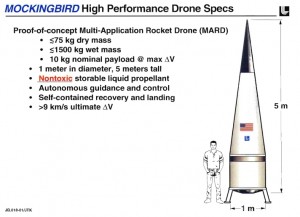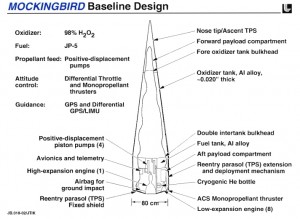More than two years ago I posted the first of what was supposed to be a multi-part series on on how to use engineering to make Utah a very different place. Part two took a while to come together. I had maps, geological data, lots of calculations and even CAD models… all of which got lost in a computer crash.
Gah.
To sum up part one: the Great Salt Lake is a great big stinky *nothing* in economic terms. It’s too shallow for boating, too salty for anything living except brine shrimp and bacteria. Just about the only use for it is salt recovery.
So my idea, which I’ll here present as “art” rather than “engineering” (due to the lack of math), is to turn the dead Great Salt Lake into a living inland sea.
Stage one would require getting rid of the Lake as it currently exists. To do this, it would have to be largely pumped out. This is not the problem it might seem. In the 1980’s, rains were more common… common enough that the lake was growing, and parts of Salt Lake City were under water. To deal with this, a series of high capacity pumps were installed. The three West Desert pumps have the capacity to send 1.5 million gallons per minute from the lake out into the desert, where it can then evaporate. The water volume of the lake is about 19 cubic kilometers (5,019,268,994,840 gallons). The existing pumps could move this volume of water in about 6.4 years.
The time required to pump out the lake would be reduced further by the simple expedient of diverting the rivers that feed it. Evaporation alone would go far towards lowering water levels in a hurry. However, in this case, it’s important to let the rivers keep running into the lake.
My suggestion would be to increase the pumping capacity as much as possible… and to use very rugged pumps. Because in my plan, they’d be pumping substantially more than just salt water. Instead, they’d pump mud.
As the project gets underway, bulldozers, excavators and other earth moving equipment would begin scraping up the muck that forms the bottom of the lake and moving it to the pumps. The pumps would suck up the sludge and send it out into the western desert. The current West Desert pumps send water only a short distance, to the Newfoundland Evaporation Basin. I would send the sludge further… perhaps to Dugway proving ground, perhaps further west (the desert near Nevada would seem an obvious place). In any event, during summer, the sludge would quickly dry out.
One of the bits of data I lost was just how deep the sludge goes before it hits bedrock. I’ve looked for it again, but damned if I can find it. So… assume we want to new lake to average a depth of 33 meters/100 feet. With a surface area of around 4400 square kilometers, this is a total volume of water, sludge and rock to be removed of 145,200,000,000 cubic meters. Relying purely on the exiting pumps, capable of moving 1.5 million gallons (5678 cubic meters) per minute, getting rid of this volume would take 48 years. This is excessive. To deal with this, I’d increase the scale of the pumping operation by a factor of ten, allowing the lake – the water, the sludge and a good chunk of the bedrock – to be moved out into the desert in little more than one Presidential administration.
At the end of that time, what do we have? A giant gaping hole in the ground. Water flows into the hole through three main rivers, the Bear, Jordan and Weber. Flow rates average 68 cubic meters/second, 15 cubic meters/second and 10 cubic meters/second, respectively, for a total of 93 cubic meters per second. To refill the lake using just the river water would take something like 18,000 years (not counting losses due to evaporation). Even thinking long term, this is nuts. What to do??
Well… once the lake is emptied out, there is that giant bank of pumps, just sitting there looking stupid and useless. The solution: move the pumps. While a detailed engineering study would be needed to work out the best locations, my preliminary suggestion would be to move them to San Francisco bay, near Vallejo, California. Build a salt water pipeline from the bay to the lake, a distance of about 710 miles. Use the pumps – along with, admittedly, a great many more – to pump ocean water up over the Sierras, past Reno, past Winnemucca and Elko, past West Wendover and into the new and improved Great Salt Lake. If you maintain the same flow in as you originally had flow out… you can refill the lake with ocean water in less than seven years.
At that point, you wind up with a sizable inland sea, filled with ocean water, ready to be stocked with ocean life. Stock it with species that are currently being fished to extinction. Stock it with species that’ll bring sport fisherman. Stock it with dolphins and small whales.
Over time, the “ocean” water quality will decline. Due to remnant salt from the bottom and the inflow of river water and human pollutants, it’s probable that the water will get nasty if the local ecosystem cannot filter it out and make use of the pollutants. So, probably every few decades the West Desert pumps will need to fire up and either run the water through a filtration/desalination system… or just out into the desert to evaporate. The pipeline from the ocean can be used to top off the lake.
Of course, at the end of this you still have a giant pipeline from the Pacific to the Great Salt Lake. Most of the time this pipeline would not need to add much to the Great Salt Lake, apart from a relative trickle to account for evaporation (somewhere on the order of a hundred cubic meters/second). But why let it sit otherwise unused? Several ideas immediately present themselves.
Anyone who has driven I-80 from Salt Lake to San Fran knows that most of Nevada is *boring.* Well, once the Great Salt Lake project has proven itself… why not do it again? New sizable ocean water lakes across norther Nevada could have substantial appeal. Nevada casinos that are basically oceanside could make a *vast* amount of money.
Additionally: just spray water out into the desert. Let it evaporate. It will leave a layer of salt, of course; this salt will need to be deposited somewhere where it will do no harm, or where it can be economically harvested. The water that evaporates away? It will help to form clouds and rain. Properly directed, this can aid in times of drought, or change larger climate patterns.
What would all this cost? Well… let’s just say “a lot.” For starters, the power required to run the ocean water pumps – and there would have to be a lot of them, to move a vast volume of water over a series of mountains and through deserts, to a target more than 4,000 feet above sea level – would be at least 125 megawatts (according to the calculator HERE). To be conservative, though, assume that at least one gigawatt would be needed. Where in the hell is all that power going to come from?
The obvious answer: a few nuclear power plants. One 500 megawatt plant in San Francisco bay; one 250 megawatt plant near Reno; one 250 megawatt plant near or in the Great Salt Lake would seem to do the job. Cooling water, of course, would not be a problem.
Additionally, the pipeline itself would provide the basis for a fair amount of power. Assuming it’s 710 miles/ 1140 km long and ten meters in diameter (that’s a handwavy guess), the cross-sectional area as seen from above is 11,400,000 square meters. Cover that with solar cells. Assume the cells have an efficiency of 20%, and due to the day/night cycle they receive an average of 500 watts per square meter, the total electrical power generated would be 1.14 gigawatts… enough to run the system.
Once the lake is full, all that electrical power would be available for other uses.
Still, the startup costs for a project like this would be vast, as would be the manpower requirements. While I’m pretty much an anti-hugenormous government sorta guy, this sort of project is pretty much possible only as a hugenormous government project. Something like the FDR-era Works Projects Agency would be needed. While a project like this, if successful, would pay for itself over time, the startup costs would be vast. How to pay for something that would probably cost hundreds of billions of dollars per year?
Hmmm.
Well, let me think. The FedGuv currently spends more than a *trillion* dollars per year on various forms of welfare. And we have a vast number of unemployed people, many of whom are drawing unemployment income and other welfare payments while *not* working. A clear part of the solution: link welfare payments to work on the Great Salt Lake project. In other words… get rid of welfare as such, and replace it with actual employment. This project, as I’ve laid it out here, would take at least a decade and a half, and realistically probably at least twenty or thirty years. That’s an entire career’s worth of job security for someone who might otherwise draw welfare instead… all while *not* adding to the deficit or putting other businesses out of business due to government competition (no private companies, so far as I’m aware, are planning on massive oceanwater pipelines from the Pacific to Utah). It would provide a kickstart to the decaying American steel industry due to the need for pipeline and pumps; for the nuclear and solar power industries; for tourism in California, Nevada and Utah; for farming in Nevada and points downwind; for the fishing industry, for the ability to fish inland rather than out at sea; for environmentalists, who get to see endangered ocean life installed inland, reducing the pressure to fish them at sea; and for the vast army of people who get paid to *work* rather than get paid to *not* *work,* thus instilling a work ethic into ’em.
Further down the line, the pipeline could be continued east into the midwest. Use the vast electrical power from the pipeline PV arrays to run desalination systems; use the desalinated water directly for irrigation or driving water, or let it filter down to aquifers that are currently being drained. In times of drought, let it evaporate into clouds, or refill rivers and reservoirs.




